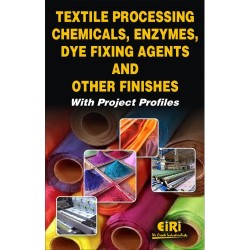Handbook Of Textile Auxiliaries Manufacturer
- Handbook Of Textile Auxiliaries Manufacturer List
- Handbook Of Textile Auxiliaries Manufacturer In Pakistan
Nonionic polyacrylamide for textile auxiliary It is homopolymer formed of acrylamide, with high purity, good solubility, high molecular weight. 2.Because of its strong moisture absorption characteristics, it can reduce the broken rate when spinning; 3.Polyacrylamide can prevent the fabric antistatic and flame retardant; 4.Meanwhile, it can be used for dyeing and printing auxiliaries, and it can make the product fastness, high brightness. 5.It can also be used as bleaching of non silicon polymer stabilizer; 6.In addition, polyacrylamide can also used in textile printing and dyeing wastewater purification. Broad-spectrum antibacterial effect, strong inhibition on the growth and breeding of various bacterium and fungi by up to over 99%, and not leading to drug resistance of bacterium.
Question 5:How can i get a sample9 Free samples is available,but freight charges will be at your account and the charges will be return to you or deduct from your order in the future. Question 6: How to confirm the Product Quality before placing orders9 You can get free samples for some products,you only need to pay the shipping cost or arrange a courier to us and take the samples. About product and suppliers:214,898 textile auxiliaries products are offered for sale by suppliers on Alibaba.com, of which leather auxiliary agents accounts for 77%, paper chemicals accounts for 75%, and petroleum additives accounts for 71%.A wide variety of textile auxiliaries options are available to you,There are 214,334 suppliers who sells textile auxiliaries on Alibaba.com, mainly located in Asia. The top countries of suppliers are Austria, China, and India, from which the percentage of textile auxiliaries supply is 1%, 98%, and 1% respectively.Textile auxiliaries products are most popular in United States, Vietnam, and United Kingdom.

Handbook Of Textile Auxiliaries Manufacturer List
Dyeing is one of the most effective and popular methods used for colouring textiles and other materials. Dyes are employed in a variety of industries, from cosmetic production to the medical sector. The two volumes of the Handbook of textile and industrial dyeing provide a detailed review of the latest techniques and equipment used in the dyeing industry, as well as examining dyes and their application in a number of different industrial sectors.Volume 1 deals with the principles of dyeing and techniques used in the dyeing process, and looks at the different types of dyes currently available. Part one begins with a general introduction to dyeing, which is followed by chapters that examine various aspects of the dyeing process, from the pre-treatment of textiles to the machinery employed. Chapters in part two then review the main types of dyes used today, including disperse dyes, acid dyes, fluorescent dyes, and many others for a diverse range of applications.With its distinguished editor and contributions from some of the world’s leading authorities, the Handbook of textile and industrial dyeing is an essential reference for designers, colour technologists and product developers working in a variety of sectors, and will also be suitable for academic use.
Handbook Of Textile Auxiliaries Manufacturer In Pakistan
Dyeing is one of the most effective and popular methods used for colouring textiles and other materials. Dyes are employed in a variety of industries, from cosmetic production to the medical sector.
The two volumes of the Handbook of textile and industrial dyeing provide a detailed review of the latest techniques and equipment used in the dyeing industry, as well as examining dyes and their application in a number of different industrial sectors.Volume 1 deals with the principles of dyeing and techniques used in the dyeing process, and looks at the different types of dyes currently available. Part one begins with a general introduction to dyeing, which is followed by chapters that examine various aspects of the dyeing process, from the pre-treatment of textiles to the machinery employed. Chapters in part two then review the main types of dyes used today, including disperse dyes, acid dyes, fluorescent dyes, and many others for a diverse range of applications.With its distinguished editor and contributions from some of the world’s leading authorities, the Handbook of textile and industrial dyeing is an essential reference for designers, colour technologists and product developers working in a variety of sectors, and will also be suitable for academic use.